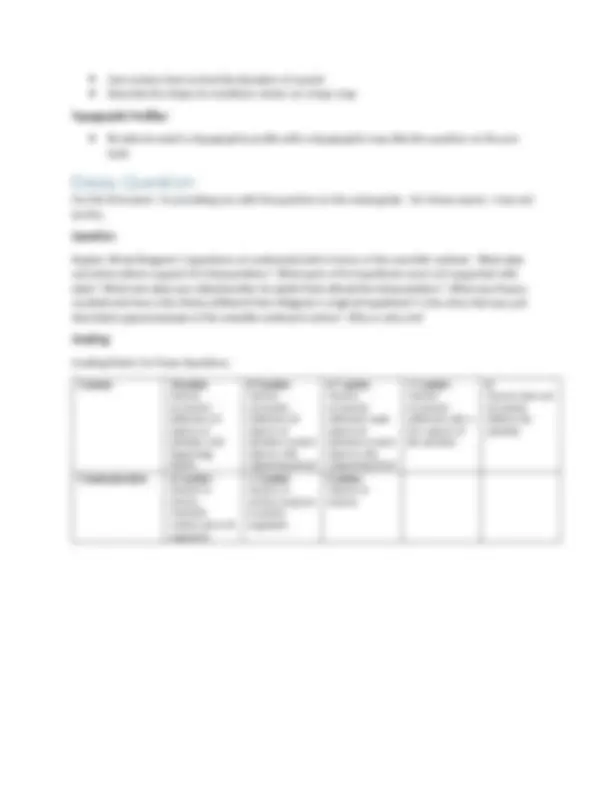



Study with the several resources on Docsity

Earn points by helping other students or get them with a premium plan


Prepare for your exams
Study with the several resources on Docsity

Earn points to download
Earn points by helping other students or get them with a premium plan
Community
Ask the community for help and clear up your study doubts
Discover the best universities in your country according to Docsity users
Free resources
Download our free guides on studying techniques, anxiety management strategies, and thesis advice from Docsity tutors
Study Guide for Exam 1 SP16 Material Type: Notes; Class: Physical Geology: SC1; Subject: Geology; University: Front Range Community College; Term: Spring 2016;
Typology: Study notes
1 / 3

This page cannot be seen from the preview
Don't miss anything!


Exam Format: 30 multiple choice or true/false questions (30 points) 3-5 short answer and drawing questions (25 points) 1 essay (15 points) 70 points total
Scientific Method: You will need to be able to: Identify or write a definition of “science” Identify or describe the difference between data and interpretations and their relationship to each other. Identify or describe the difference between qualitative and quantitative data Define the words: observation, hypothesis, prediction. Identify each of these components in description of a scientific study. The Sun and the Earth: You will need to be able to: Put the events in order: formation of the universe, formation of the sun, formation of the earth, formation of the moon. Identify and estimate of the time between each event. For example: the universe formed several billion years before the solar system. Describe each of the “goldilocks” conditions for life Explain why plate tectonics is important to the existence of life. Maps Skills: See Lab 9: Topographic Maps.
Layers of the Earth: Identify each of the layers of the earth on a diagram. Explain how earthquakes help scientists understand the interior of the earth Describe the difference between oceanic crust and continental crust. Draw a cross section view of the two together. Describe the difference between layers defined by chemical properties (such as the crust) and layers defined by physical properties (such as the lithosphere). Identify the two most common elements in the crust and mantle Identify the most common element in the core. Describe how density and temperature increase with depth. Identify which layers of the earth are liquid. Identify the cause of Earth’s magnetic field. Pangea, Wegener and Continental Drift
Identify Alfred Wegener’s important contribution to the geosciences. Recognize the approximate decade in history in which Wegener completed this work. Identify each of the observations (data) that led to Wegener’s interpretation. Describe the major problem with Wegener’s hypothesis. Paleomagnetism: Identify the cause of the magnetic field. Describe the movement of the magnetic field over time (wander and flip). Describe the data that lead to the interpretation of the movement of the magnetic field. Explain how the magnetic pole reversals contribute to scientists understanding of sea floor spreading. Pangea: Define Pangea, define supercontinent, identify whether or not Pangea was the only supercontinent. Divergent Boundaries: Identify the difference between cross section view, map view and three dimensional view. Draw specific diagrams in each view. Draw a labeled cross section view diagram of a mid ocean ridge spreading center. Identify the location of a mid ocean ridge on a map. List the features of a mid ocean ridge Define continental rift Explain the relationship of continental rifts and mid ocean ridges. Labs (This will be approximately 15 of the 70 points)
You were already quizzed on this, so I won’t bother to put it on the test.
Latitude and Longitude: Identify latitude and longitude when listed properly, or given on a simple diagram If given coordinates, be able to identify the approximate location (for example, what continent is the point near). Be able to convert degrees, minutes seconds to decimal degrees (coordinates will be in multiples of 15 minutes or seconds) Map Scaling: Answer conceptual questions about the map ratio scale Use the map bar scale to determine a distance specified on a map Contour Lines: Identify contour lines and index contours